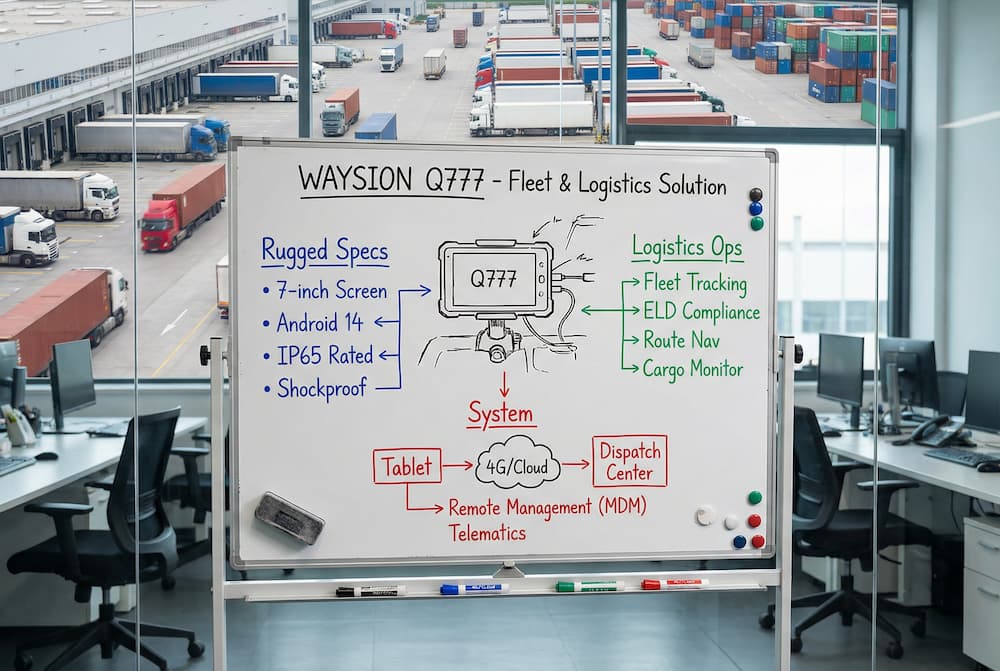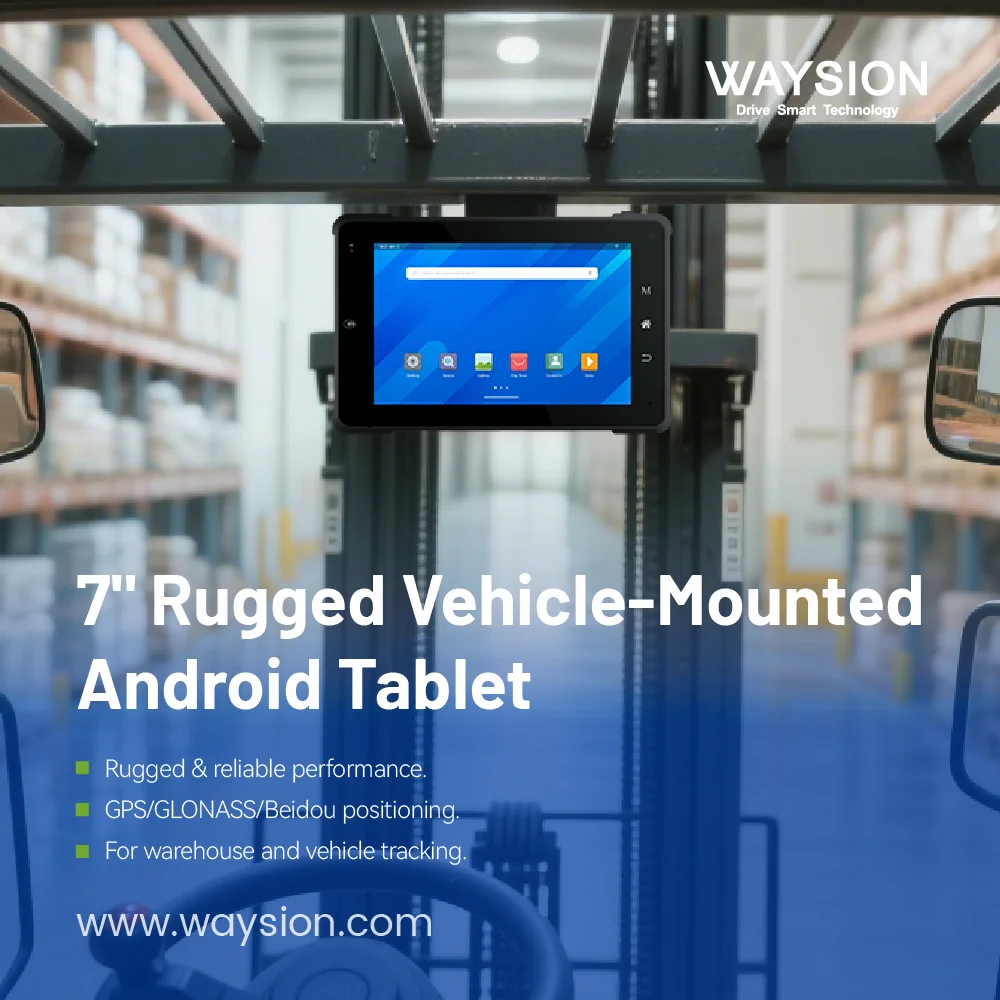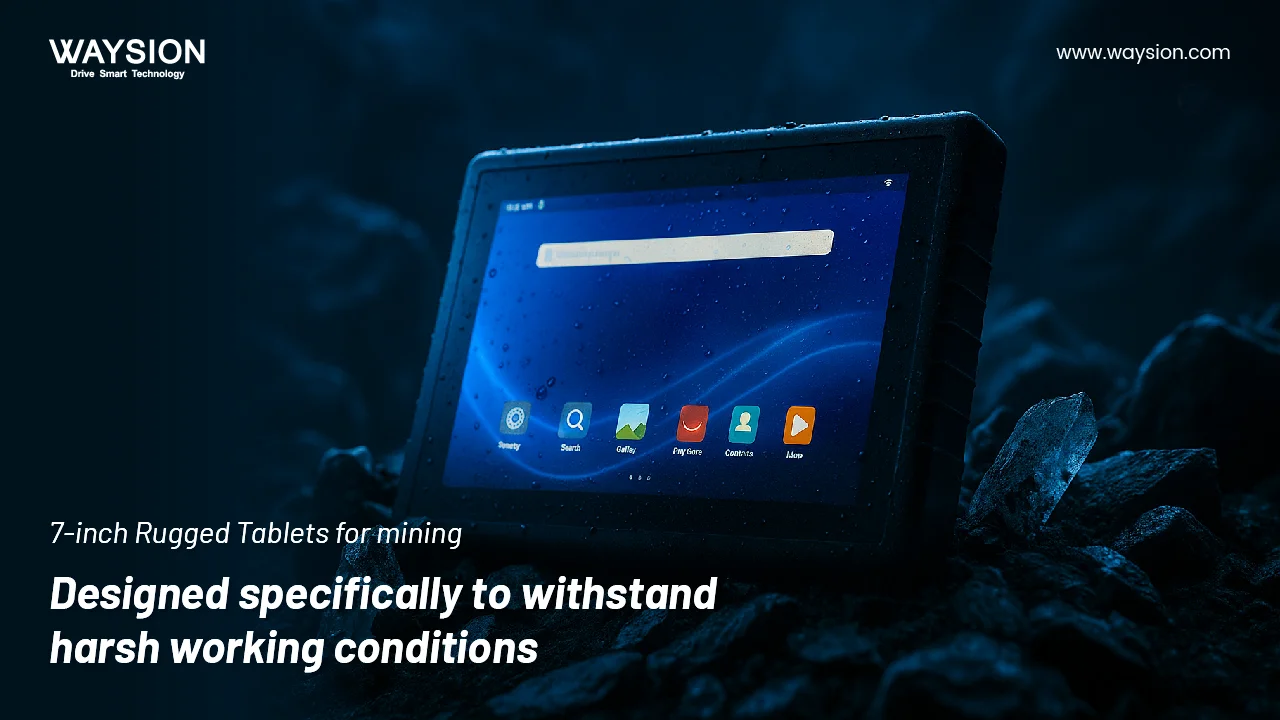What is mobile data terminal?
Mobile Data Terminals (MDTs) have become indispensable tools for industries such as transportation, logistics, emergency services, and field operations. These rugged, high-performance devices serve as the backbone for real-time data exchange, communication, and fleet management, providing businesses with improved efficiency, accuracy, and productivity.
- What is a Mobile Data Terminal (MDT)?
- Key Features of a Mobile Data Terminal
- Applications of Mobile Data Terminals
- Benefits of Using Mobile Data Terminals
- How to Choose the Right Mobile Data Terminal
- Conclusion: Why Mobile Data Terminals are Essential for Modern Businesses
- What is a Mobile Data Terminal Used For?
- What is the Mobile Data Terminal in Police Cars?
- What is a Portable Data Terminal?
- What is an Example of a Data Terminal?
- What are the Different Types of Terminals Used for Data Input?
- What are the Three Types of Terminals?
- What are the Two Basic Input Devices Used to Input Data?
- How Does a Dumb Terminal Work?
- MDT vs. Rugged Tablet: Understanding the Difference
What is a Mobile Data Terminal (MDT)?
A Mobile Data Terminal is a specialized device used to send, receive, and process real-time information within various work environments. Designed to endure challenging conditions, MDTs are often rugged, compact, and equipped with advanced communication technologies such as Wi-Fi, GPS, Bluetooth, and cellular connectivity.
From fleet vehicles to emergency response units, MDTs serve as a critical link between field personnel and centralized systems, enabling seamless communication, task management, and data sharing. Modern MDTs come with features such as touchscreen interfaces, GPS tracking, high-capacity batteries, and compatibility with various operating systems like Android, Windows, or Linux.

Key Features of a Mobile Data Terminal
1. Rugged and Durable Design
One of the standout features of an MDT is its rugged construction, making it suitable for tough environments. Built to meet IP65 or MIL-STD-810G standards, these devices are resistant to dust, water, vibrations, and extreme temperatures. This durability ensures uninterrupted operations, even in demanding conditions such as construction sites, mining areas, or long-haul trucking routes.
2. Real-Time Communication
Mobile Data Terminals are equipped with advanced communication modules, including 4G LTE, Wi-Fi, and Bluetooth, enabling real-time data exchange. This ensures that operators can send and receive updates, communicate with dispatch centers, and stay connected at all times.
3. GPS and Navigation Integration
Most MDTs come with GPS capabilities, providing accurate location tracking, route optimization, and navigation support. For fleet management, GPS integration plays a pivotal role in improving efficiency, ensuring timely deliveries, and reducing fuel consumption.
4. Touchscreen Displays
Modern MDTs feature high-resolution touchscreen displays that are designed for usability and visibility. Many displays are daylight-viewable, ensuring clear readability in bright sunlight, and support multi-touch functionality for easy interaction.
5. Customizable Software Platforms
Mobile Data Terminals are compatible with custom software solutions that cater to specific industry needs. Whether for logistics management, dispatch control, inventory tracking, or data analysis, MDTs offer seamless integration with Android, Windows, or Linux operating systems.

Applications of Mobile Data Terminals
1. Fleet Management in Transportation
In the transportation industry, MDTs act as essential tools for fleet management systems. Fleet operators use MDTs to monitor vehicle locations, fuel usage, and driver performance. Real-time data from MDTs allows businesses to optimize delivery routes, reduce downtime, and enhance customer satisfaction.
For long-haul trucking, MDTs help drivers remain compliant with regulations by logging hours of service (HOS), vehicle diagnostics, and maintenance schedules.
2. Public Safety and Emergency Services
Mobile Data Terminals are widely adopted by police departments, fire services, and emergency medical teams. These devices provide emergency responders with real-time access to dispatch systems, maps, and incident data, enabling them to arrive quickly at the scene. MDTs also ensure secure communication, critical for life-saving decisions.
3. Logistics and Supply Chain Management
For logistics companies, MDTs streamline supply chain operations. From inventory management to warehouse communication, MDTs ensure accurate data collection, shipment tracking, and process automation. This reduces delays, prevents errors, and enhances overall operational efficiency.
4. Mining, Agriculture, and Construction Vehicles
In rugged industries such as mining, agriculture, and construction, MDTs serve as reliable communication tools for field workers. The rugged build of MDTs ensures consistent performance in harsh environments. They are used for equipment monitoring, task allocation, and data reporting to centralized systems.
5. Public Transport and Taxi Services
Mobile Data Terminals are integral to public transportation systems and taxi services. They provide route navigation, ticketing solutions, and real-time vehicle tracking, improving operational efficiency and enhancing passenger satisfaction.
Benefits of Using Mobile Data Terminals
1. Enhanced Productivity
By enabling real-time communication and task automation, MDTs eliminate manual processes and reduce operational delays, significantly improving overall productivity.
2. Improved Accuracy
MDTs provide accurate and up-to-date information, minimizing human errors and ensuring seamless data transfer between field personnel and central offices.
3. Cost Efficiency
Through features like route optimization and fuel tracking, MDTs help businesses reduce costs associated with fuel, vehicle maintenance, and inefficient routing.
4. Increased Safety
In industries like emergency services and transportation, MDTs ensure safety through features such as real-time monitoring, driver performance tracking, and secure communication channels.
5. Scalability
Mobile Data Terminals are highly scalable and can integrate with custom software solutions, making them adaptable for small businesses and large enterprises alike.
6. Edge Computing and AI Integration
The newest generation of MDTs are moving beyond simple data relay. Many now feature powerful processors capable of edge computing, allowing for immediate processing of video footage and sensor data (e.g., driver fatigue detection, predictive maintenance analytics) directly on the device. This integration with AI models drastically reduces server strain and ensures faster, smarter decision-making in real-time operations.
How to Choose the Right Mobile Data Terminal
When selecting a Mobile Data Terminal, it is important to consider the following factors:
- Ruggedness: Ensure the MDT meets industry standards like IP65 or MIL-STD-810G for durability.
- Connectivity: Look for devices with 4G LTE, Wi-Fi, and Bluetooth capabilities for seamless communication.
- Battery Life: Opt for MDTs with long-lasting batteries to ensure uninterrupted operations in the field.
- Display: Choose a device with a daylight-readable touchscreen for outdoor visibility.
- Operating System: Select MDTs compatible with popular operating systems like Android, Windows, or Linux for better software integration.

Conclusion: Why Mobile Data Terminals are Essential for Modern Businesses
The Mobile Data Terminal has revolutionized industries by providing robust, reliable, and scalable solutions for real-time communication, task management, and fleet operations. With features like rugged construction, advanced connectivity, and GPS tracking, MDTs enhance efficiency, accuracy, and productivity across sectors. Whether in transportation, emergency services, logistics, or construction, the MDT remains an invaluable asset for businesses looking to optimize their operations and stay ahead in a competitive market.
What is a Mobile Data Terminal Used For?
A mobile data terminal is used to facilitate real-time communication between field personnel and central dispatchers. It allows officers, EMS workers, and firefighters to receive and send data, access databases, and perform a multitude of functions that would otherwise require them to return to their station or headquarters.
What is the Mobile Data Terminal in Police Cars?
The mobile data terminal in police cars, often referred to as an MDT, serves as a computer system that provides officers with immediate access to police databases, warrant information, vehicle registration details, and more. This access empowers officers to make informed decisions while in the field, improving both efficiency and public safety.
What is a Portable Data Terminal?
A portable data terminal (PDT) is a handheld device that serves similar functions to an MDT but in a more compact form. PDTs are used in various industries, such as logistics and retail, to manage inventory, track packages, and process transactions.
What is an Example of a Data Terminal?
An example of a data terminal is the mobile data terminal used in ambulances. These terminals allow EMS workers to transmit patient information to hospitals, access medical databases, and communicate with dispatchers, all while en route to the hospital.
What are the Different Types of Terminals Used for Data Input?
There are several types of terminals used for data input, including desktop computers, laptop terminals, and mobile data terminals. Each serves a specific purpose and is tailored to the needs of the user and the environment in which they operate.
What are the Three Types of Terminals?
The three main types of terminals are dumb terminals, smart terminals, and intelligent terminals. Dumb terminals are passive input/output devices that rely on a central computer for processing. Smart terminals have some processing capabilities, while intelligent terminals are essentially computers with their own operating systems and applications.
What are the Two Basic Input Devices Used to Input Data?
The two basic input devices used to input data are keyboards and pointing devices, such as mice or touchpads. In the context of mobile data terminals, touch screens have also become a common input method.
How Does a Dumb Terminal Work?
A dumb terminal works by sending input from the user, such as keystrokes, to a central computer system and displaying the output from the central system on its screen. It does not have its own processing power or storage capabilities and relies entirely on the central system for computing functions.
MDT vs. Rugged Tablet: Understanding the Difference
While often confused, Mobile Data Terminals (MDTs) and standard Rugged Tablets serve distinct purposes, primarily defined by their mounting and power source:
| Feature | Mobile Data Terminal (MDT) | Rugged Tablet |
|---|---|---|
| Primary Use | Vehicle-mounted, fixed installation, mission-critical operations. | Handheld, portable, mobile data collection, inspection tasks. |
| Power Source | Often hard-wired directly to the vehicle’s power system (for continuous use). | Primarily relies on high-capacity internal batteries. |
| Connectivity | Integrated vehicle-specific antennas (external GPS, LTE) for maximum signal. | Standard internal Wi-Fi/LTE antennas. |
| Durability Focus | High resistance to vibration, shock, and extreme temperatures (e.g., MIL-STD-810G/H). | High resistance to drops, dust, and water (e.g., high IP ratings). |
| Common OS | Highly customizable Windows/Linux (for specific vehicle software) or Android. | Android or Windows. |
Choosing an MDT over a rugged tablet often comes down to the need for a permanent, stable, and deeply integrated computing solution within a vehicle or machine.
About the Expert
This comprehensive guide was authored by [janet/Waysion Technical Team], a leading voice in industrial computing with [13 years] of experience in designing, manufacturing, and deploying Mobile Data Terminals and rugged computing solutions. [janet/Waysion] is dedicated to ensuring operational efficiency and safety across demanding sectors like fleet management and logistics. Waysion has been a state-level and city-level High-Tech Enterprise since 2005.








